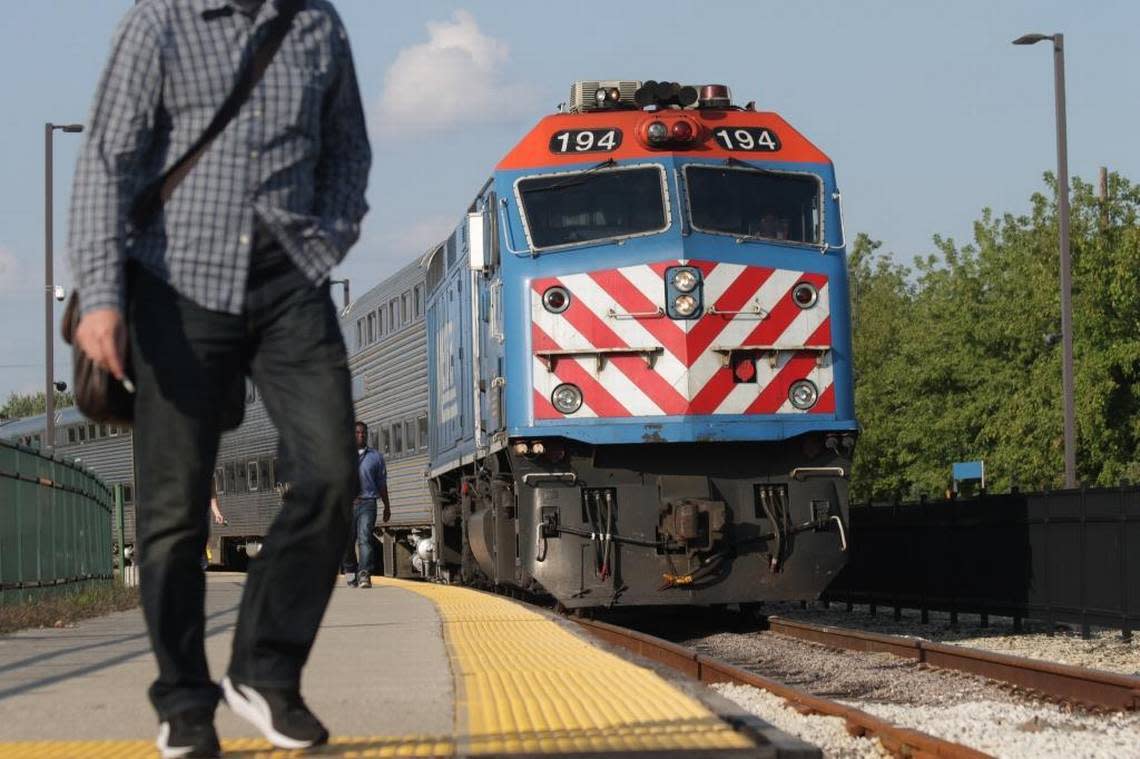KCATA lays out ambitious plan for 107 miles of passenger train service in Kansas City area

The Kansas City Area Transportation Authority said Thursday it was asking for federal aid to begin development of a passenger rail system that would link cities in the region.
It offered few details, but The Star obtained a copy of the grant application through an open records request Friday. It shows an ambitious plan — one that would face many hurdles, from funding to cooperation between governments and freight railroads.
It proposes adding 107 miles of passenger train service within the greater Kansas City area, from Leavenworth to Lee’s Summit, mostly on existing track used by the area’s freight railroads.
Where additional track would be needed, no additional right of way would have to be acquired. New track would be laid within those freight rail corridors, as well as in corridors already controlled by the KCATA and local governments, at a cost of what the application says would be $2 million to $5 million a mile.
The plan also envisions building a double-track bridge over the Missouri River next to the Interstate 435 bridges linking Platte and Wyandotte counties.
According to the application, which was submitted to the Federal Railroad Administration on March 27:
“The Corridor proposes to create intercity connections between existing Amtrak-served lines from Topeka on the west; on new lines running west from DeSoto, Kansas, through the largest cities in Kansas; east to Kansas City, Missouri; from Ft. Leavenworth south to the Kansas City International Airport (‘KCI’), continuing south from KCI through highly populated areas of Kansas City, then linking Amtrak connections which continue east to St. Louis.”
The system would connect with the existing bus network and Kansas City Streetcar.
All of this hinges on the KCATA getting cooperation from the freight railroads that own the tracks on which they operate, and finding the money to build out and operate the system. A tall order, as the KCATA itself admits in the document.
“We recognize that negotiating trackage rights agreements with Class 1 railroads to use active shipping lines requires collaborative and deferential negotiations,” it says, but then goes on to express confidence that such deals can be struck.
In addition to requesting federal, state and local dollars, the proposal notes that the KCATA has the authority to issue tax-exempt bonds without voter approval by virtue of the bi-state compact between Kansas and Missouri that Congress approved in 1966, creating the transportation authority.
“Applicant envisions that tolls authorized by the Compact will secure debt service on the bonds,” the application says. Tolls is another word for revenue.
According to the compact, money that the KCATA borrows can be repaid with “revenues collected for the use of any facility or combination of facilities owned or operated or owned and operated by the authority, or out of any other resources of the authority…”
The KCATA cannot levy taxes.
“We’re thrilled to take a lead in making an intercity rail system a reality for the Kansas City Metro and our bi-state communities,” Frank White III, president and CEO of KCATA, said in Thursday’s news release announcing the grant proposal that was submitted nearly two months ago.
“A passenger rail system would not only create convenience and better accessibility for so many residents in the area, but it also would provide environmental benefits by reducing energy consumption and emissions with less cars on the road.”
Local transportation planners have for decades set out proposals for various intercity rail systems within the metro area. Twenty years ago, a plan to run commuter trains alongside Interstate 35 between Olathe and downtown Kansas City fizzled when BNSF and Johnson County could not come to an agreement that made financial sense.
Multiple light rail proposals within Kansas City came and went, as well. More than a decade ago, former Jackson County Executive Mike Sanders promoted a commuter rail line linking downtown with eastern Jackson County. It failed to move forward because of difficulties getting cooperation from the railroads.
Sanders did, however, broker a deal to buy the former Rock Island rail corridor from Lee’s Summit to the Truman Sports Complex, which now features a hiking and biking trail. The KCATA pays half the debt service and is responsible for business development along the corridor.
The Rock Island remains a potential rail corridor as part of the proposal set forth in the grant application.
The document says that the KCATA has not sought federal funding for its proposed passenger rail system. However, it has “identified numerous diverse federal and state funding programs to support its Corridor development efforts.”
According to the proposal, the system would make it easier for soldiers at Fort Leavenworth to get to and from KCI for their deployments and for workers to get to their jobs at the Panasonic battery plant now being built in DeSoto. It would also connect to Amtrak, providing links to close-in destinations like Topeka, as well as the national rail network via the Southwest Chief and Missouri River Runner.
The federal grant program was included in the Bipartisan Infrastructure Bill, which President Joe Biden signed into law in November 2021. It aims at boosting the creation of interstate rail networks with a pipeline of ready-to-go projects. Both existing and newly proposed intercity passenger rail services can qualify.
The grant solicitation published in the Federal Register makes clear that the application is just the beginning of a lengthy process.
First-round winners will receive up to $500,000 to study the scope, cost and schedule of the project. Those that advance are eligible for more substantial grants, though exact figures were not disclosed, to allow for further study and implementation of intercity rail.
William Wong, a spokesman for the Federal Railroad Administration, declined to say how many grant applications the agency received. Funding decisions are expected to be announced in September or October, he said.

